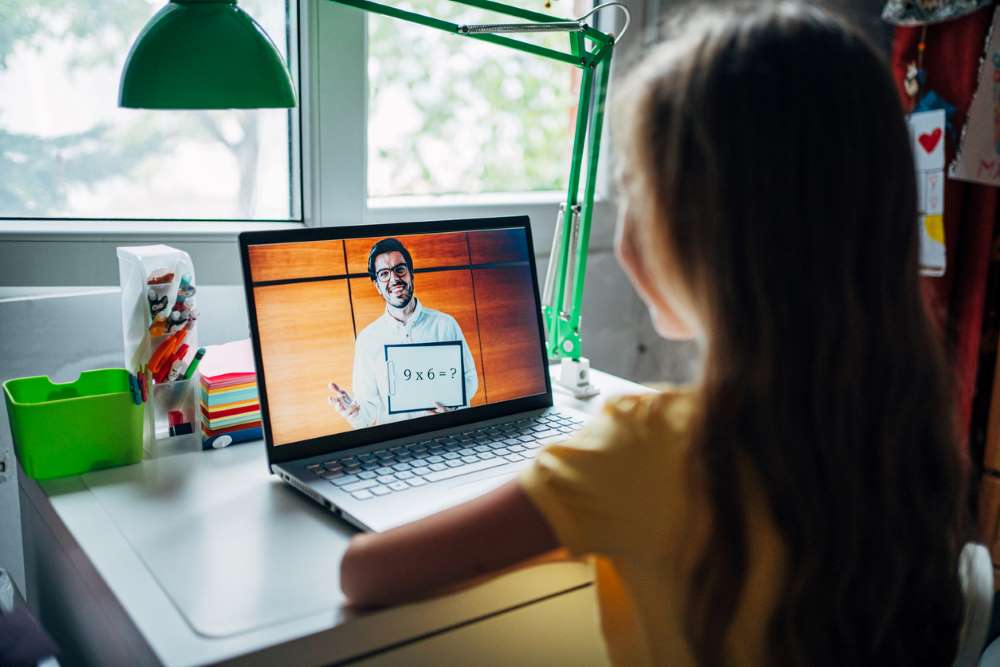
What science teaches us about facilitating intellectual and social growth at home.
The millions of American parents with children stuck at home due to the pandemic don’t just have to cope with the added demands of child care and supporting online classes, but also with the fear that their children are essentially losing a year of education, academically and socially. As a former professor of child development, child psychotherapist, and parent, I can reassure parents that a year spent at home will not be lost, and might even produce gains. Better yet, there are simple ways to improve children’s outcomes – without taking much time away from overburdened parents.
Children constantly explore their physical and social environments, driven by curiosity and innate desires for mastery, to help others, and to emulate those they admire. They are ceaseless experimenters, making conscious and unconscious predictions while observing the consequences. Children gain knowledge, expertise, and even wisdom, whether or not they attend school.
Of course, what they learn depends partly upon the environments we provide. While children may not learn as well from online classes as they do in classrooms, they learn even less from other virtual screen worlds. But they absorb information continuously when engaged with the real physical and social worlds at home.
1. Interactions with family members and other people teach them new ideas, how to compromise, converse, cooperate, and manage conflict – all vital skills throughout life. By playing a board game, they learn social and cognitive skills including turn-taking, rule-following, strategy, concentration, and graciousness in victory or defeat. Active play develops physical and cognitive abilities, while reading anything from a comic book to a cereal box can help develop creative, imaginative skills.
2. Routine household tasks offer educational opportunities and enhance self-respect, while freeing parental time. For example, preparing meals builds understanding of fractions, temperature, measurement, time, and how to follow instructions. Planning balanced meals and making shopping lists that fit a budget teach math, organization, and nutrition. Even younger children can ease parental loads and feel proud of their helpful accomplishments by doing tasks like sorting laundry by color. (https://www.nytimes.com/2005/01/16/education/edlife/how-we-learn.html)
3. Pre-literate children will learn everything they need to by playing with toys, household objects, and people – whether indoors or outdoors ( https://www.nytimes.com/2009/08/16/opinion/16gopnik.html). One of the most successful school systems in the world, Finland’s, starts formal schooling at age seven – younger children simply play. (https://www.smithsonianmag.com/innovation/why-are-finlands-schools-successful-49859555/) Beginning academic instruction at a more mature age, when mastering the curriculum comes more easily, seems to help Finland’s world-beating school system vastly out-perform ours – even for Finnish students from disadvantaged backgrounds.
4. Older students can improve their academic abilities by teaching younger children (or their parents) what they learned in school last year. Their understanding of the material will deepen, as they must think about the answers instead of parroting them to pass an exam.
5. A weekly trip to the library is also worthwhile, as books that satisfy children’s curiosity will provide hours of educational diversion. Teaching them to locate reliable sources of information online can provide endless research opportunities. Independently finding answers to gripping questions is the foundation of education for life, as well as school.
Pioneering 20th century researchers including John Dewey, Piaget and Montessori advocated for what 21st century “Hole in the Wall” educational innovator Sugata Mitra now calls Minimally Invasive Education, which “uses children's natural curiosity and focuses on providing an enabling environment where they can learn on their own.”
Minimally invasive education is what parents can provide with a library card or an internet connection. Spending an hour or two a day engaged with inherently interesting topics, whether dinosaurs or baseball or dog training or how to bake the best brownies, will teach children a tremendous amount – not least about how to research, how to discriminate amongst competing experts, and the pleasure of satisfying one’s curiosity. This can lead to a lifetime of greater academic success and self-confidence.
But what happens next year?
What can parents expect to happen next year, when students are back in the classroom and expected to take the next standardized exam? Will they be prepared? Will they pass? The truth is that we don’t know, and outcomes will vary depending on local conditions. But even in what parents typically consider a “worst case” scenario – a child having to repeat a grade due to lack of progress – there are potential gains.
During my decades of work as a psychotherapist and as a school consultant, I have often recommended that a child repeat a grade because of behavioral or academic struggles. Each time, their parents agonized, afraid their child would be damaged or fall behind. Instead, 100% of those children improved dramatically - psychologically, academically, and socially. A previously ostracized child would become class president, or an academic failure turned into a class star. Their self-esteem skyrocketed, and students who experienced learning and social difficulties ended up, years later, at top universities.
Why did these children thrive? Because, instead of feeling defeated by overly challenging assignments or painful social interactions, things finally came easily to them. “Hey, I’m actually good at this – I want to do more,” they thought, as they went from bottom of the class to top.
Now, through no fault of their own or their parents, some students may fall behind due to pandemic-based disruptions, and could end up repeating a grade to master the curriculum. My expert prediction is that rather than losing out, these children - if they engage their brains and bodies with interesting and helpful real-world projects and play for just a few hours a day – will ultimately meet with greater academic and social success than their peers who graduate a year earlier.
This “lost year” may actually be a tremendous gift to your child’s education. Unfortunately, this does not diminish the stress of the pandemic, the loneliness of missing friends, or the enormous difficulties facing parents struggling to find child care. But let me take one worry off of parents’ overflowing plates: your children will continue to learn and grow this year – guaranteed.
References:
To understand how humans evolved as a uniquely cooperative species, see “The Role of Ontogeny in the Evolution of Human Cooperation, by
Michael Tomasello & Ivan Gonzalez-Cabrera: https://sites.duke.edu/tomasellolabduke/files/2017/06/Tomasello2c-Gonzalez-Cabrerea-1.pdf
For a discussion of the remarkable learning instrument that is the brain of a human infant, see “The Infancy of the Human Brain” G Dehaene-Lambertz and E S Spelke: https://pubmed.ncbi.nlm.nih.gov/26447575/
For research on the importance of social interaction (as opposed to passive viewing and listening) for language learning, see “Is speech learning ‘gated’ by the social brain?” by Patricia K. Kuhl: http://ilabs.washington.edu/kuhl/pdf/Kuhl_2007.pdf
On the importance of play for learning, see “Your Baby Is Smarter Than You Think By” Alison Gopnik: https://www.nytimes.com/2009/08/16/opinion/16gopnik.html?scp=2&sq=Alison%20Gopnik&st=cse, and on the importance of learning from household objects and tasks, see “How We Learn,” also by Alison Gopnik: https://www.nytimes.com/2005/01/16/education/edlife/how-we-learn.html
To learn about Finland’s remarkably successful school system, see “Why Are Finland’s Schools Successful?” by LynNell Hancock: https://www.smithsonianmag.com/innovation/why-are-finlands-schools-successful-49859555/
To learn more about Minimally Invasive Education, visit the Hole in the Wall site: http://www.hole-in-the-wall.com/MIE.html



























